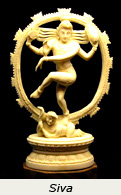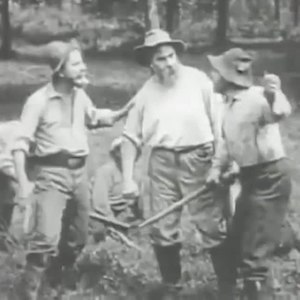Women

Bhakti Poets: Poem, Akkamahadevi 2
Bhakti poets—who were in some cases lower-caste Hindu women—and their audiences drew emotional sustenance from these verses, which expressed a pure devotion to Hindu deities.

Bhakti Poets: Poem, Akkamahadevi
Bhakti poets—who were in some cases lower-caste Hindu women—and their audiences drew emotional sustenance from these verses, which expressed a pure devotion to Hindu deities.

Bhakti Poets: Poem, Mirabai 4
Bhakti poets—who were in some cases lower-caste Hindu women—and their audiences drew emotional sustenance from these verses, which expressed a pure devotion to Hindu deities.

Bhakti Poets: Poem, Mirabai 3
Bhakti poets—who were in some cases lower-caste Hindu women—and their audiences drew emotional sustenance from these verses, which expressed a pure devotion to Hindu deities.

Bhakti Poets: Poem, Mirabai 2
Bhakti poets—who were in some cases lower-caste Hindu women—and their audiences drew emotional sustenance from these verses, which expressed a pure devotion to Hindu deities.

Bhakti Poets: Poem, Mirabai
Bhakti poets—who were in some cases lower-caste Hindu women—and their audiences drew emotional sustenance from these verses, which expressed a pure devotion to Hindu deities.

Bhakti Poets: Poem, Janabai
Bhakti poets—who were in some cases lower-caste Hindu women—and their audiences drew emotional sustenance from these verses, which expressed a pure devotion to Hindu deities.

Swords and Hearts
In the years before D. W. Griffith made The Birth of a Nation (1915), the epic film that debuted on the 50th anniversary of the Civil War, he produced 11 Civil War films in which he mastered the art of filmmaking and storytelling. These have surprising relevance to the history of girls.

The House with Closed Shutters
In the years before D. W. Griffith made The Birth of a Nation (1915), the epic film that debuted on the 50th anniversary of the Civil War, he produced 11 Civil War films in which he mastered the art of filmmaking and storytelling. These have surprising relevance to the history of girls.
A Female Writer’s Response to the American Champion or a Well–Known Colonist
Better known for her defense of the rights of women, Olympe de Gouges defended the rights of the downtrodden in general. Here she points out the cruelty of slavery and expresses the hope that the slave trade will be abandoned.